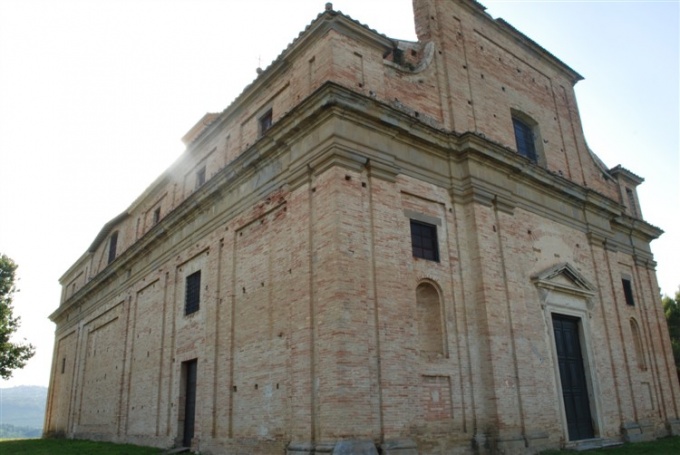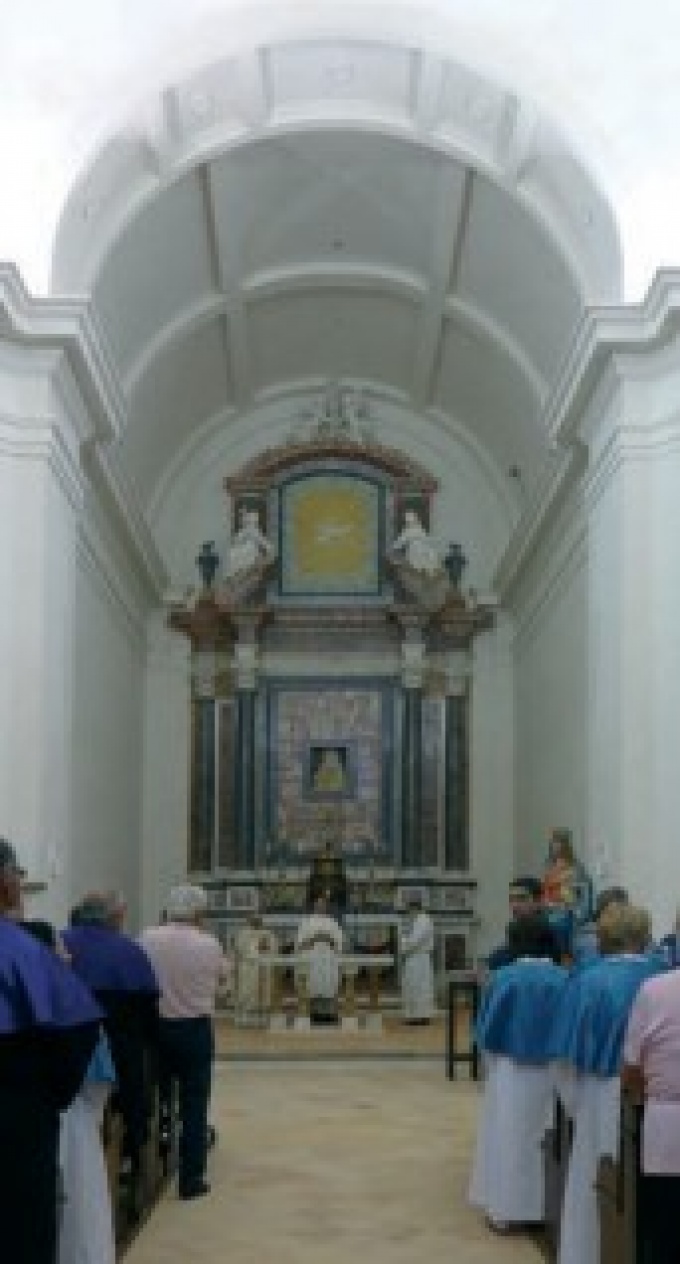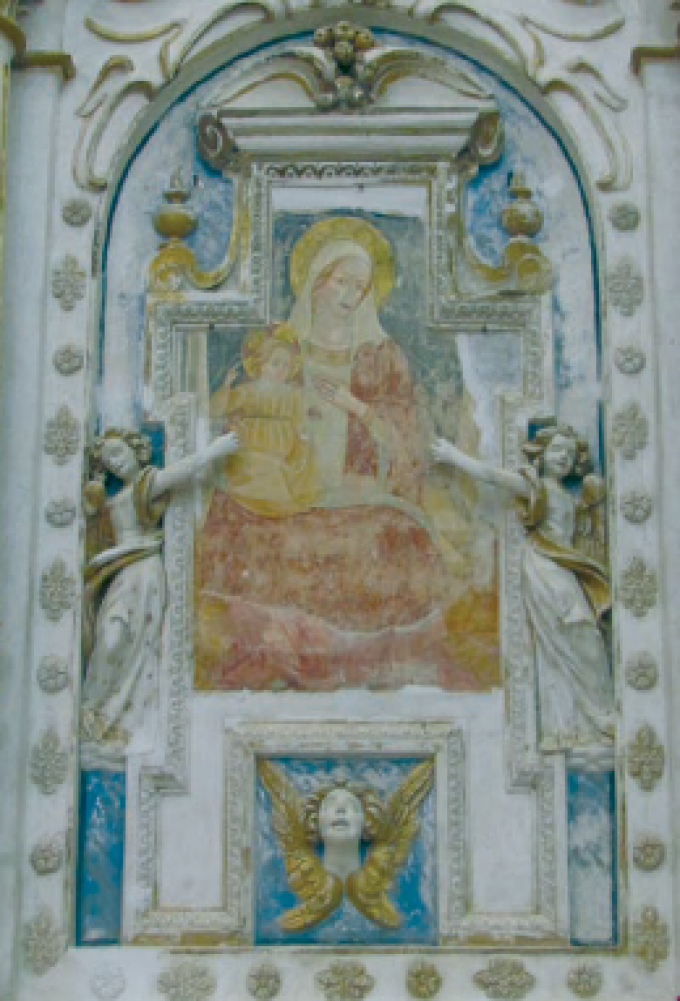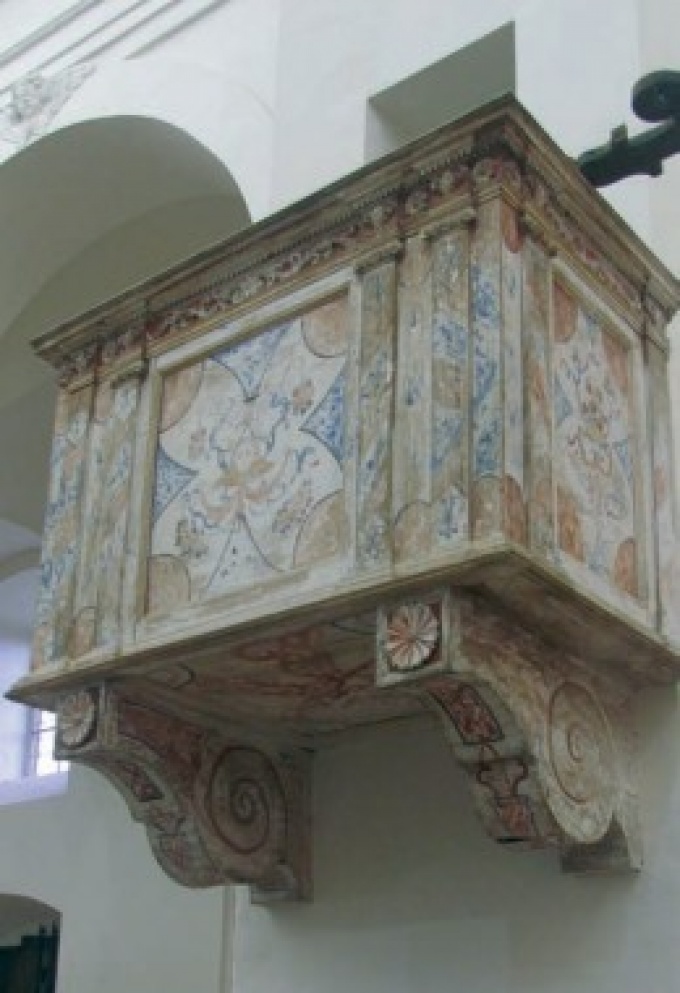The Sanctuary of Madonna delle Grazie is just over a kilometre from Bevagna. From the top of its hill you can see the town in all its borders. The Sanctuary was erected by the will of a citizen, Pancascio, who had a grace from the Virgin. He recompensed it with the construction of a temple in his name. The church was built in 1450.
Ancient stories handed down from generation to generation tell that like so many Umbrians a citizen of Bevagna named Pancascio went looking for work in the Roman countryside, and stayed there for some years where he was hit by a very serious disease. The thought of death made Pancascio invoke the help of The Virgin, to whom he vowed that, if he were healthy, he would erect in his honour a Majesty near his village.
Returning from the Roman countryside to his native town, Pancascio stopped on the top of a hill to rest just a mile from Bevagna, which was then called Colpulito. Tired of travel and illness, Pancascio woke up from sleep and noticed that he had recovered his health. So, full of faith and hope in Mary, he took some stones and made a stone wall, leaving it as a sign of his draw. In a few minutes he walked the rest of the way back to his relatives and friends, and told them all about the miracle he had received from Mary.
After a few days he returned to the hill of Colpulito and built two majesties on the wall he had left: the first one looking towards noon and the other one looking to the west. In the latter he made represent the Immaculate Virgin in the middle, on the sides San Pietro, San Cristoforo and Sant’Antonio Abbate. In the first one instead he ordered to paint the Madonna and Child in act to bless; on the sides San Giovanni Battista and San Luca, San Bernardino Da Siena, Santa Caterina and Santa Lucia virgins and martyrs, in the turn the Redeemer. In 1582, when the Sanctuary underwent modifications aimed at receiving the large influx of pilgrims who every day visited the Virgin Mary, the painting was cancelled, but the effigy of Our Lady was preserved and it is still visible today.
The prodigious healing of Pancascio had already spread not only in the neighbouring villages but also in the distant cities from which devoted people came to pray the new miraculous image of Mary. That sacred mountain became so devoted to Mary, that the same name was changed to it, and from the title of Colpulito, or Majesty of Pancascio, was called Colle or Madonna delle Grazie.
Many are the miracles that with the passing of time manifested to the pilgrims of that Majesty: Once the fame of miracles reached Spoleto, Bishop Pietro Orsini sent his Vicar and on September 7, 1582 he himself went to Bevagna. It was in this popular enthusiasm that the construction of the new church on Monte delle Grazie was decided. After the consent and the approval of the Bishop, the two consuls called the master architect Martelli Valentino from Perugia, and behind his drawing, on June 16, 1583 the construction of the temple started. Martelli conceived and raised to the Madonna delle Grazie a church in perfect Doric style with a Latin cross. The outer periphery of the church occupies a square area of 675 meters. The façade and the sides are decorated by sandstone Doric pillars, with finely shaped trabeation. The interior has three naves, with cross vault, dome and sanctuary. Six arches, with Doric pillars, divide the main nave from the side, and above these there are some housing rooms for custodians. The main altar is supported by four only-one-piece marble columns and was completed in 1641. It has the ancient Image made to paint from the miraculous Pancascio for picture. In the right arm of the cross vault there is the other painting made by Pancascio himself. In the left arm a large wooden Crucifix is venerated, which does not lack any artistic value. In the side naves there are four altars with columns and stucco friezes. The paintings on canvas have some artistic value and are attributed to Ascensidonio Spacca.
Candido Piatti, Il Santuario della Madonna delle Grazie, presso Bevagna, Tipografia Porziuncola di Santa Maria degli Angeli 1940-XVIII.










